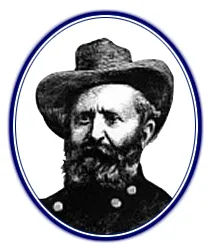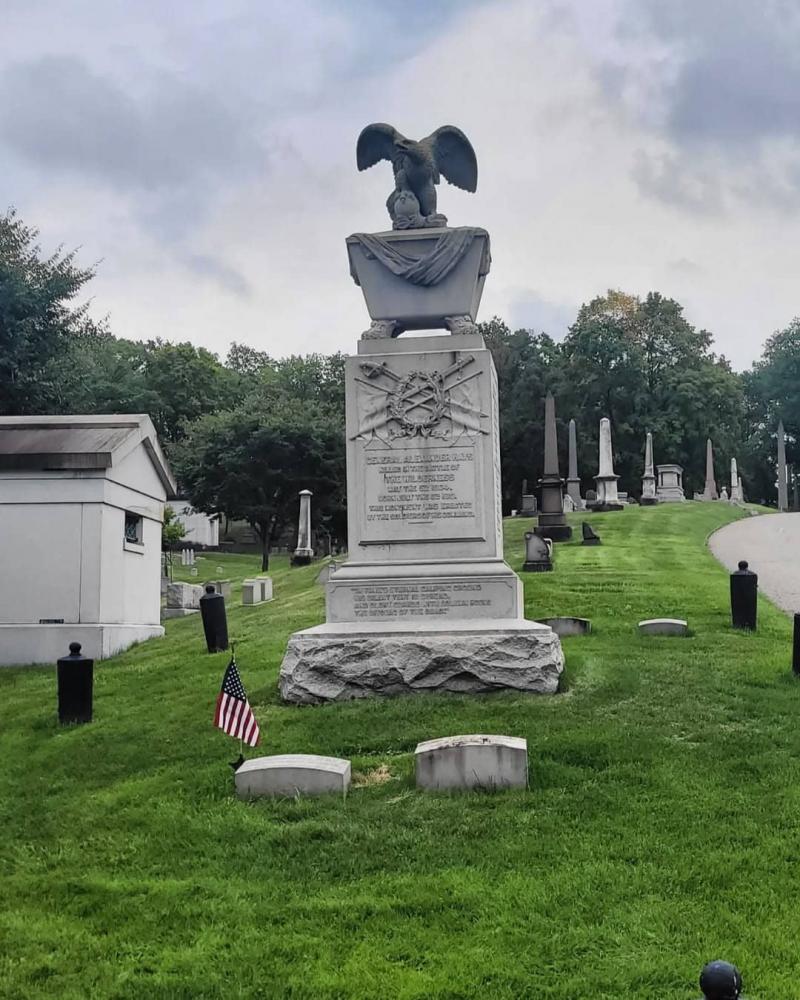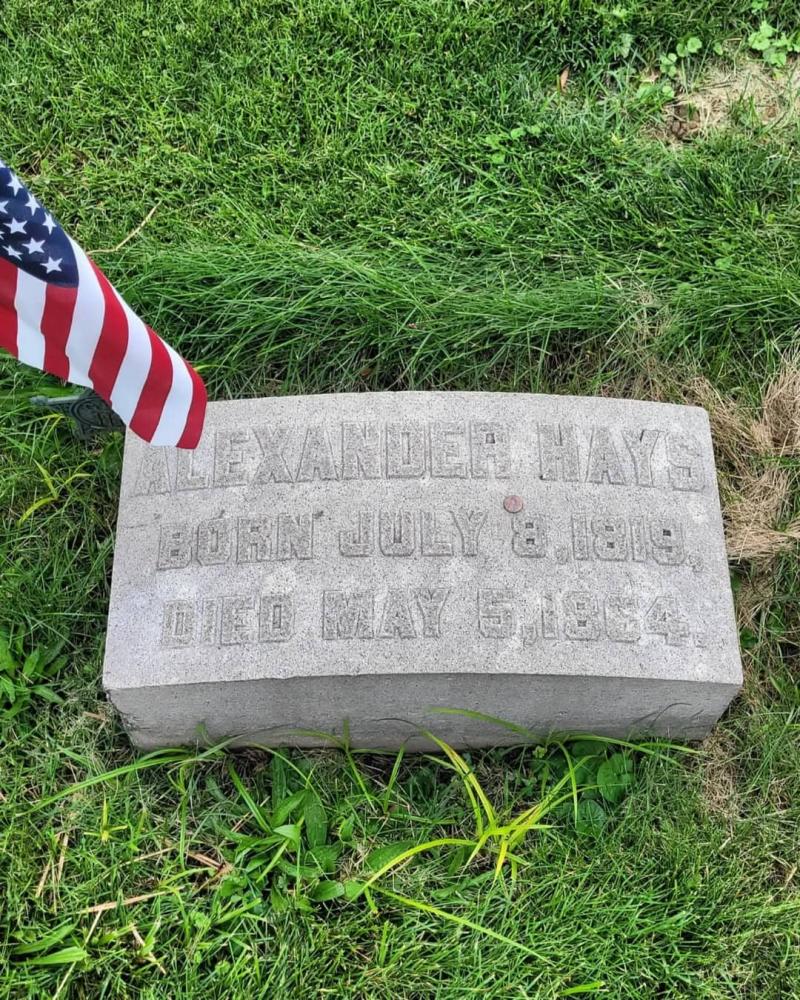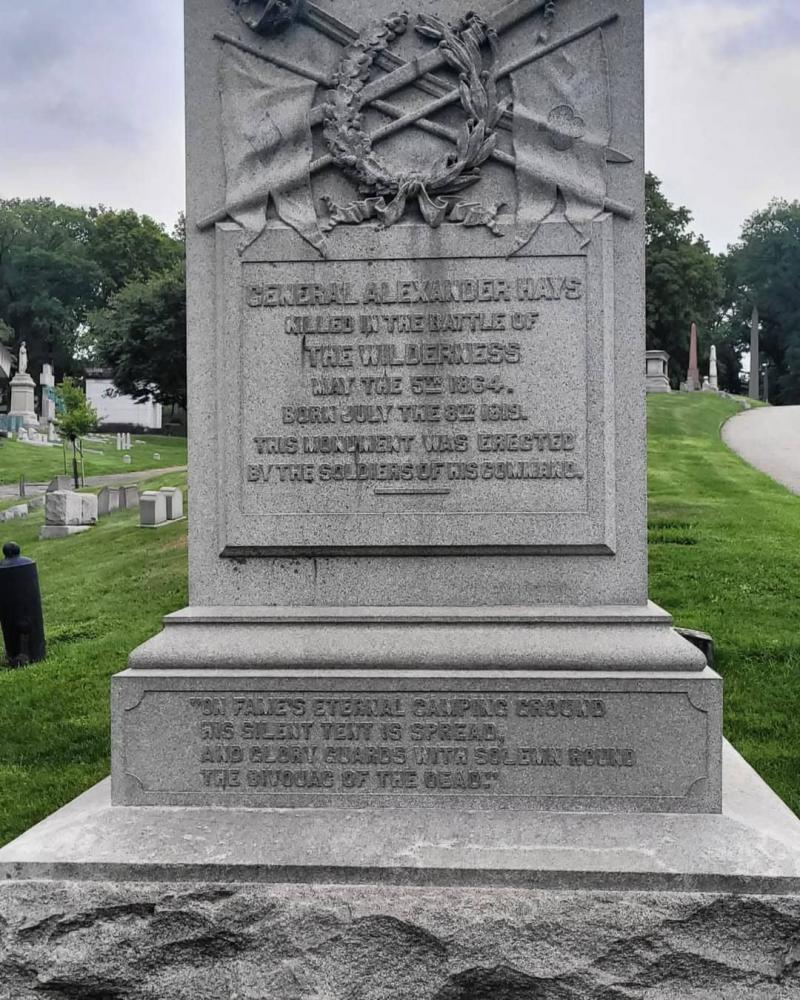Among the several monuments to famous military figures at Allegheny Cemetery, one stands out. Located in section eight is a monument of inverted cannons and smooth granite erected by Civil War veterans.
Born north of Pittsburgh in Franklin Venango County on July 8, 1819, Alexander Hays was the son of a member of Congress and a general in the Pennsylvania militia. He attended Venago Academy, Mercer Academy, and Allegheny College in Meadville, where he left in his senior year to enter West Point. No scholar, Hays graduated 20th out of 25 students in the Academy's class of 1844. Ulysses S. Grant graduated from the class preceding Hays and considered him a close friend for many years thereafter.
Hays' military career began during the Mexican War, during which he served in several battles, none of which distinguished him for heroic measures. He resigned from his military endeavors in 1848 and returned to Franklin to take up a business in the iron trade. A failed businessman, he left for California to seek fortune in gold and, fleeing destitution there, returned to Pittsburgh to apply his skills as an engineer and bridge builder.
He gave the names to the Mexican War streets, which were then newly laid out in Allegheny City and are now the pride of Pittsburgh's North Side.At the outbreak of the Civil War, he reentered the military, first as a private, but soon as captain of the newly authorized 16th Infantry, and quickly thereafter, as colonel of the 63rd Pennsylvania Volunteers. His first campaign under this command was in combat at Seven Pines, where, as before, his leadership warranted no report. A month later, however, during the Seven Days Battles, Hays directed a bayonet charge with his regiment into an enemy line to cover for the retreat of others. At last, he was singled out for distinction.
Hays went on sick leave a month later, suffering from partial blindness and paralysis of his left arm, injuries incurred from battle.
Recounting his men's heroic efforts at Glendale during the Seven Days' Battle, Hays reported, "At one, the men sprang to their feet, and with leveled bayonets dashed upon the enemy. The conflict was short but most desperate… It was muzzle to muzzle, and the powder burned the faces of the opposing men as they contended through the paling fences."Hays recouped for a month, returning in August 1862 to take up a charge at Second Bull Run, whereupon a Rebel bullet shattered his leg.
While convalescing, he was promoted to brigadier general and, by sole virtue of his seniority, Hays took over as chief of the Third Division, Second Corps, when General William French was transferred from that post three days before the Battle of Gettysburg.
General Alexander Hays arrived at Gettysburg, completely unfamiliar with division-level command and with two brigades of his new division."The Confederate lines came into view as Hays predicted, and as they approached, he drilled his men in the manual of arms to keep them steady. Then, one man reported, 'he was riding up and down the lines in front of us, exhorting the 'boys' to stand fast and fight like men.' …Hays made some last-minute adjustments to the line and waited until the Southerners got entangled with the fences about two hundred yards away. Then he shouted, 'Fire!' his entire line erupted in flame and curling smoke… "When the smoke cleared, Hays, who was unhurt but had had two horses shot out from under him, kissed his aide in the exhilaration of the moment, grabbed a captured Rebel battle flag, and, riding down the division's line, dragged it in the dirt…"
Hays' division had broken the final charge of Pickett's men at Gettysburg.
In the Spring of 1864, at the start of the first Battle of the Wilderness, Hays was killed by a single bullet to the head. In 1864, when his longtime friend General U.S. Grant campaigned for the presidency of the United States in Pittsburgh, he asked to be driven to Hays's grave. Newspaper reports of the event described Grant's tears as solemn.According to Civil War historian Larry Tagg in his account of Hays' actions closest to Cemetery Hill, "Hays, always an emotional fighter, had a special intensity at Gettysburg. On July 3, true to his nature, when his men were cowering under the terrific cannonade that preceded Pickett's charge, Hays suddenly appeared and had his men gather up all discarded rifles, clean them, load them, and have them handy. Not only did this occupy the men during the barrage, but afterward, some of the men had as many as four loaded rifles ready for an infantry assault, which Hays sensed was coming.



